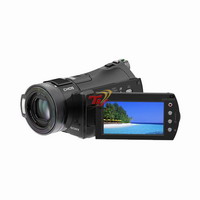Login form
Cameras
 Can you imagine a world without cameras? There would be no photographs in newspapers, books, and magazines, or even on your computer. There would be no school pictures, no snapshots of your summer vacation, no television, and no movies.
Can you imagine a world without cameras? There would be no photographs in newspapers, books, and magazines, or even on your computer. There would be no school pictures, no snapshots of your summer vacation, no television, and no movies.
It’s hard to imagine, but that’s what the world was like until the mid-1800s. That’s when the first cameras were made.
HOW DO CAMERAS WORK?
A basic camera works a lot like your eyes. Try this: First, close your eyes. Now quickly open and shut them. What did you see? You saw an image, or “picture,” from your surroundings.
A camera does the same thing, but it has a shutter instead of eyelids. When you take a picture, the shutter quickly opens and shuts. While the shutter is open, the camera “sees” an image, much like your eyes. The camera captures this picture.
A film camera catches the picture using chemicals on film. A digital camera captures the image electronically and stores it in memory or on a computer disk. The first popular photographs, called daguerreotypes, were captured on copper plates in the 1840s. Later, pictures were recorded on glass plates. Flexible film, much like we still use today, replaced glass plates in the late 1800s.
Like your eyes, a camera has a lens. A lens is a piece of glass shaped to focus light so the picture will be clear. Some cameras even have automatic focus, just like healthy eyes. If a camera lens is out of focus, the picture will be blurry.
HOW CAMERAS CHANGED THE WORLD
The camera changed the world. Before the camera was invented, people created pictures by painting or drawing. That took time and could be inaccurate.
 Around 1840, that all changed. The camera allowed people to keep a visual record of their lives and important events. Suddenly, people could see pictures of faraway places. The camera brought the whole world into people’s homes. Photographs began to influence people’s opinions about the world.
Around 1840, that all changed. The camera allowed people to keep a visual record of their lives and important events. Suddenly, people could see pictures of faraway places. The camera brought the whole world into people’s homes. Photographs began to influence people’s opinions about the world.
Cameras brought big changes to family life as well. Before the camera, only wealthy people could afford to pay painters to make portraits. Suddenly, ordinary people could afford to have snapshots of themselves and their children or grandchildren.
Later, the motion-picture camera was invented. Thanks to that, we have television and movies.
Parts of a Camera
When you take a photograph with a camera, you look through the viewfinder to frame the scene you want to record. Light rays from the scene enter the lens and travel to the viewfinder. Pressing the shutter release captures the scene. In a film camera, shown here, the image is captured on film. In a digital camera, the image is captured electronically and stored on a computer memory chip.
Source: Microsoft ® Encarta

